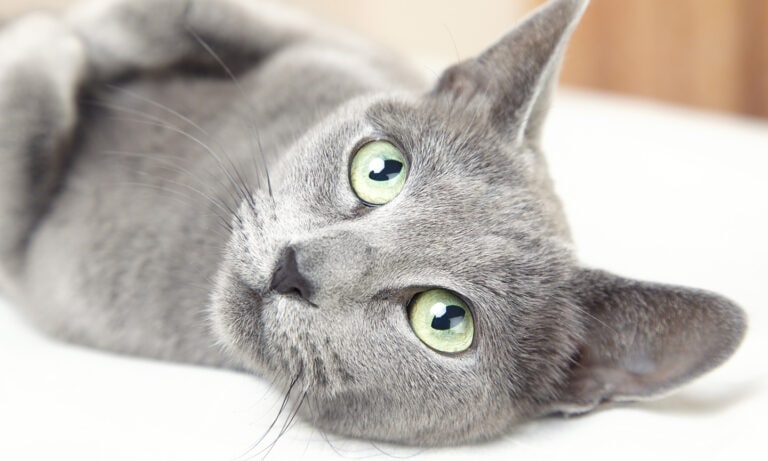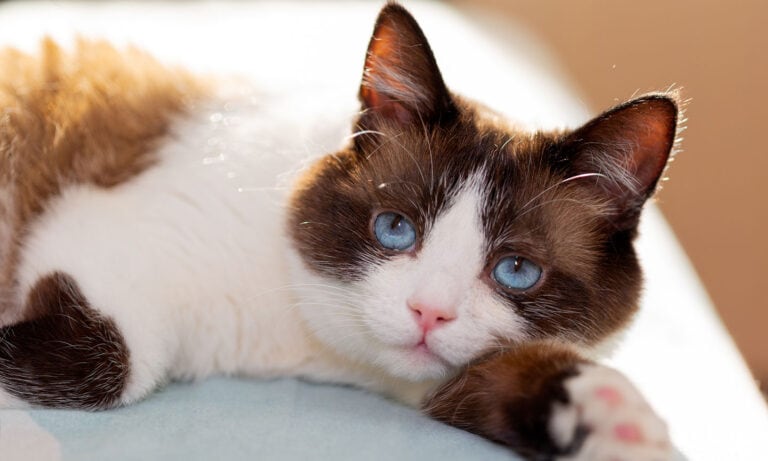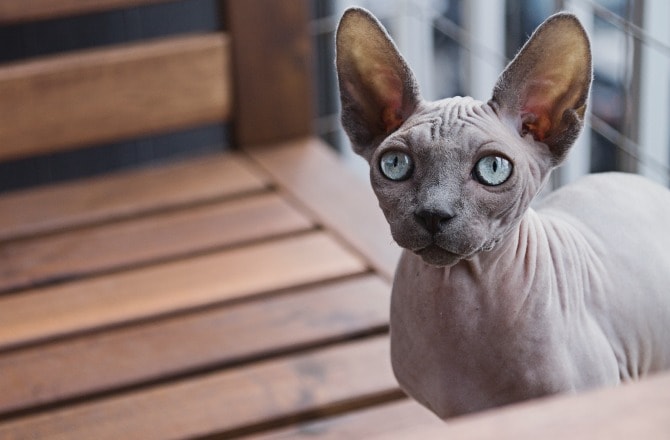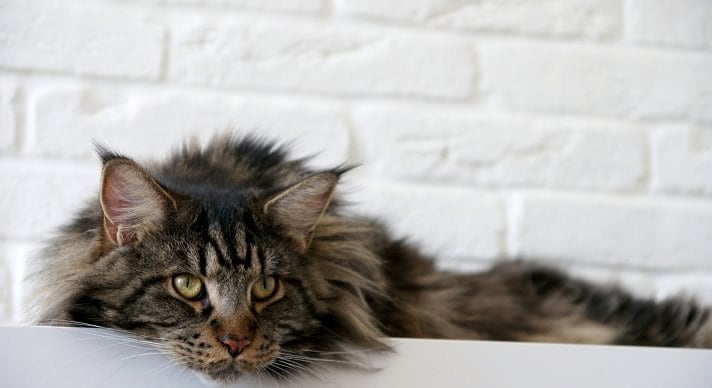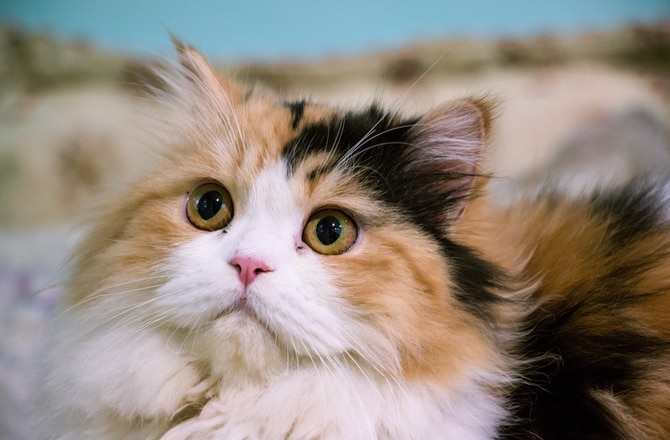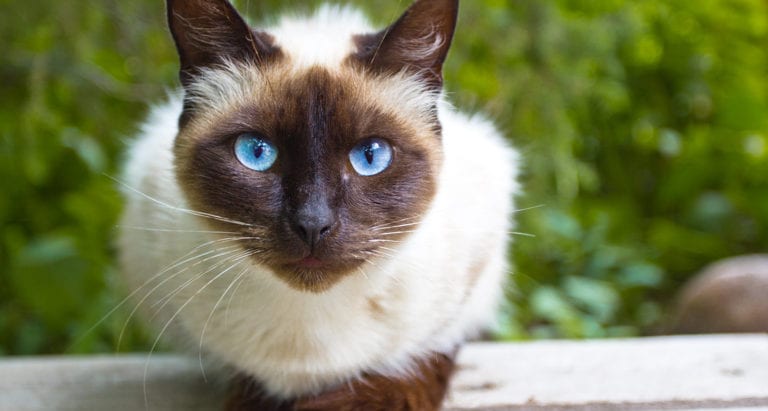Want to know the best way to start a catfight? Just suggest that your favorite breed is the world’s friendliest, and you’ll hear instant hissing from others who champion their own furry faves.
All jokes aside, there really are some standouts on the natural feline friendliness scale. Jacqui Bennett, who handles the Cat Fanciers Association Education Ring and is a longtime all-breed judge, kindly spoke to us about her expert views. As a breeder of Ocicats, Bennett lives with multiple kitties — including a Maine Coon and a rescued Persian — and while she agrees that all cats are unique and wonderful in their own way, according to her experiences, one of the following breeds, in particular, just might become your new BFF.
Persians
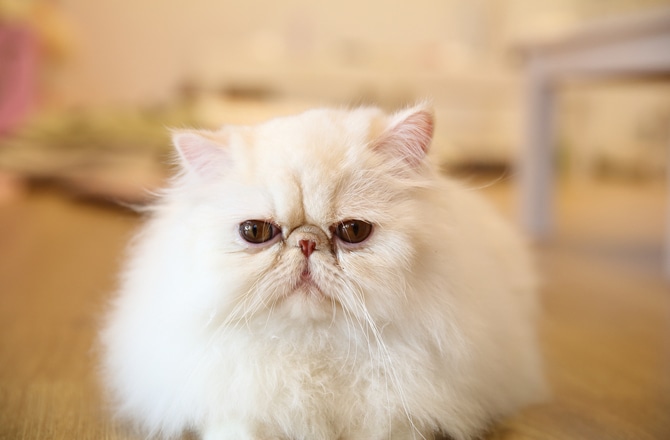
This breed makes up more than half of the CFA registrations, proving that Persians are a huge favorite among cat lovers. “They graced the very first cat shows and the palaces of Queen Victoria, and these sweet-tempered, laid-back cats have always adored being spoiled,” said Bennett. While their beautiful coats require constant attention, that works well for this breed, which enjoys having humans fuss over them. Playful but not demanding, the Persian is happiest when blending into his household, communicating quietly and gladly posing to allow others to regard their natural beauty. References to the Persian date back to 1684 B.C., attesting to the breed’s enduring popularity. Sweet and mellow, the Persian is an ideal choice for a family wishing to lavish love on a beautiful feline companion.
Exotic

The Exotic is structurally identical to the Persian, but sports a short, dense coat rather than a longer, fluffy one. That coat feels like silk and is irresistible to the touch, says Bennett. “The Exotic, a hybrid breed that combines the Persian and American Short Hair, is sweet-tempered and always up for a good time,” she added. The Exotic’s personality is the similar to the Persian’s as well, with a quiet demeanor and playful attitude. Unlike his longer-haired cousin, though, the Exotic doesn’t require an extensive daily grooming routine to maintain his plush beauty, so he’s ideally suited to Persian fans with busy lifestyles.
Bombay

The “miniature panther,” as they’ve come to be known, is a distinctive breed with a patent-leather coat and mesmerizing coppery eyes. The Bombay is inquisitive, affectionate and congenial with people and other pets. “A Bombay is always up for anything you are,” Bennett said. The breed was developed by combining a black American Short Hair with a sable-brown Burmese, and today the Bombay is a devoted lap cat who easily adapts to leash-training and excels at entertaining himself and his humans. Intelligent and mellow, the Bombay’s sociable nature is the very opposite of the wild jungle cat from which they were inspired.
Cornish Rex

Outgoing, with a love for human touch and interaction, the high-energy Cornish Rex enjoys the company of dogs, kids and other cats — and is one housecat who’ll happily play fetch with skill and joy. Bennett described this bouncy kitty as the ‘greyhound’ of cats. If you are looking for a cat with limitless affection and an undying sense of adventure, the Cornish Rex is for you. With its slender but sturdy whippet-like body, big bat ears and textured curly coat, this unique-looking breed dates to the 1950s in Cornwall, England, an accidental mutation that inspired deliberate breeding for those soft curls. “Due to their thin velvety coats, they love to snuggle with you and soak up your body heat — when they aren’t off planning their next adventure, that is,” said Bennett.
Birman
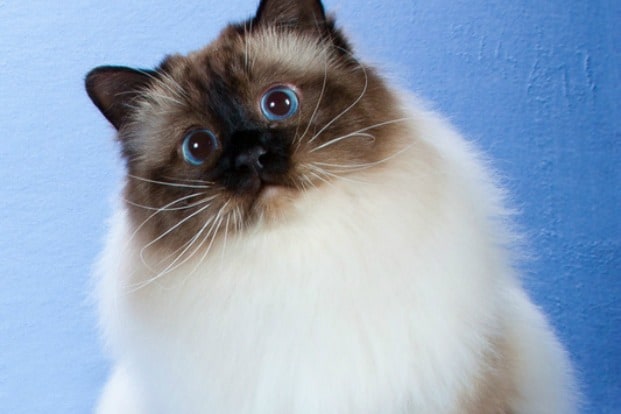
Gentle and social, with a pleasant chirp of a voice, the Birman is most content when he’s the center of your attention. “Sweet-tempered and loving, the Birman is very dog-like in its behavior,” said Bennett. “Birmans enjoy a quiet, thorough grooming as much as a quick adventure throughout the house.” Surprisingly, their lush coats do not mat, and their naturally docile nature makes them easy to handle for the minimal coat care needed. The white-pawed Birman’s origins are a mix of myth and mystery, but it’s no mystery why the breed is popular. Quietly affectionate, a lover of people and other animals, the Birman’s patient, endearing presence makes this cat an ideal companion.
Sphinx

A quirky-looking cat with wrinkles and a peach-fuzz coat that feels like suede, the Sphynx, one of the CFA’s newer breeds, is a sweet feline “with a heart full of love,” said Bennett. A hairless cat born in Toronto in 1966 became the foundation of this unusual cat. That sleek ‘hairless’ bod leads many to believe these cats are low-maintenance, but without fur to absorb body oils, the Sphynx needs regular bathing, along with nail and ear grooming, and, according to Bennett, their hairless skin also demands frequent application of lotions and massages. In terms of personality, the breed is sweet, outgoing and energetic, and prefers spending time with people and will seek attention with playful antics. While they love their humans, these cats also get along with other felines and dogs. Adaptable to almost any situation, the Sphynx will want to share your warmth by sleeping under the covers with you.
Maine Coon

The snuggly Maine Coon cat, who also scored a spot in our Most Beautiful Cats lineup, is a gentle companion who loves letting his humans take the lead. The breed began as a barn cat working to keep New England farmers’ supplies safe from rodents, and still prefers being part of his humans’ everyday lives. “Maine Coons enjoy a good adventure, as long as it doesn’t take too much energy,” said Bennett. This beauty with the multi-layered coat and often massive size will fill your lap with purring warmth. Devoted and mellow, the Main Coon is a low-maintenance friend who doesn’t expect you to entertain him, but who’s happy to hang with you whether you’re playing, working or just relaxing.
Ragdoll

Another low-key cat is the one named for its habit of flopping into their humans’ arms just like a ragdoll, said Bennett. “Ragdolls want nothing more than to quietly enjoy your company,” she added. More interested in people than most other cat breeds are, the Ragdoll is semi-longhaired, substantial in size — and the breed comes from free-roaming, non-pedigreed cats whose common trait was a sweet temperament. Developed in the 1960s in California, the Ragdoll has beautiful blue eyes and an eager-to-please attitude. They can even easily learn to come when called and play fetch. This well-behaved kitty requires minimal grooming, and will always return the maximum in affection.
Ocicat
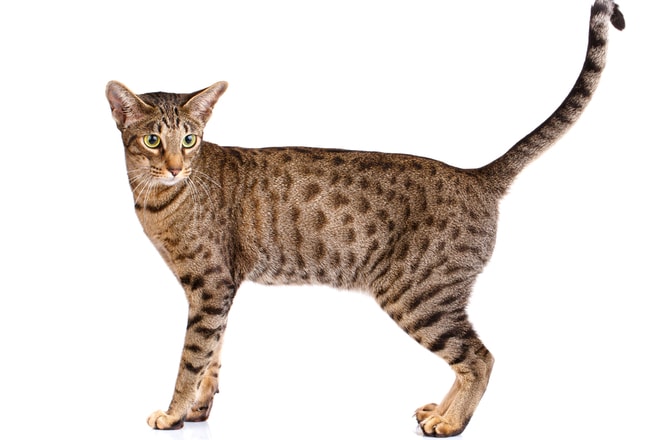
Always a show-stopper with his satiny spotted coat, the Ocicat “looks like a leopard and acts like a Labrador retriever,” said Bennett. In fact, this breed takes the best personality traits from three different parent breeds: friendliness from the Siamese (but without its constant vocal communication), activity from the Abyssinian and the laid-back qualities of the American Short Hair. Ocicats are confident and devoted to their people, without being too demanding. They get along well with other animals in the household, and are both loving and lively. Bennett calls the breed a great one for families. “The Ocicat is as happy to fetch a toy for you as he is to chill out on the couch and enjoy a good sitcom,” she added.
Burmese
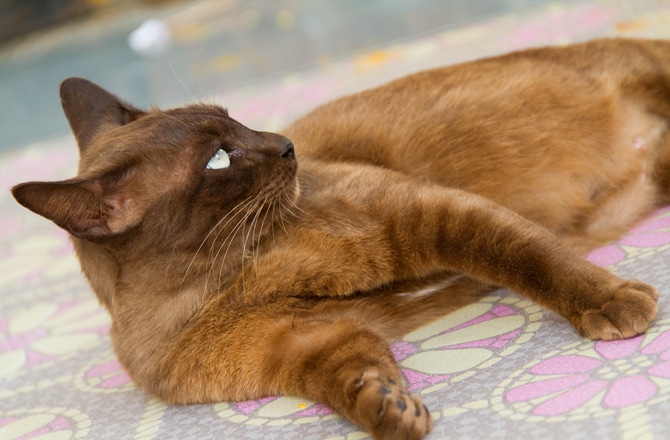
Petite and silky, the Burmese is affectionate and spirited, with a love for children, dogs … and the chance to run your household! Bennett describes Burmese as “lap-seeking missiles, who always have a purr for you mixed with their unique voice.” A sturdy breed dating back to the 1930s, the Burmese needs very little grooming. They love to be the center of attention, and eagerly trail their people from room to room, even asking for space in your bed. The Burmese is soft-spoken but persistent, and never fails to communicate the desire for plenty of gentle stroking.
Kathy Blumenstock is owned by cats, loved by dogs, writes about both, and still longs for a horse.
Share:

